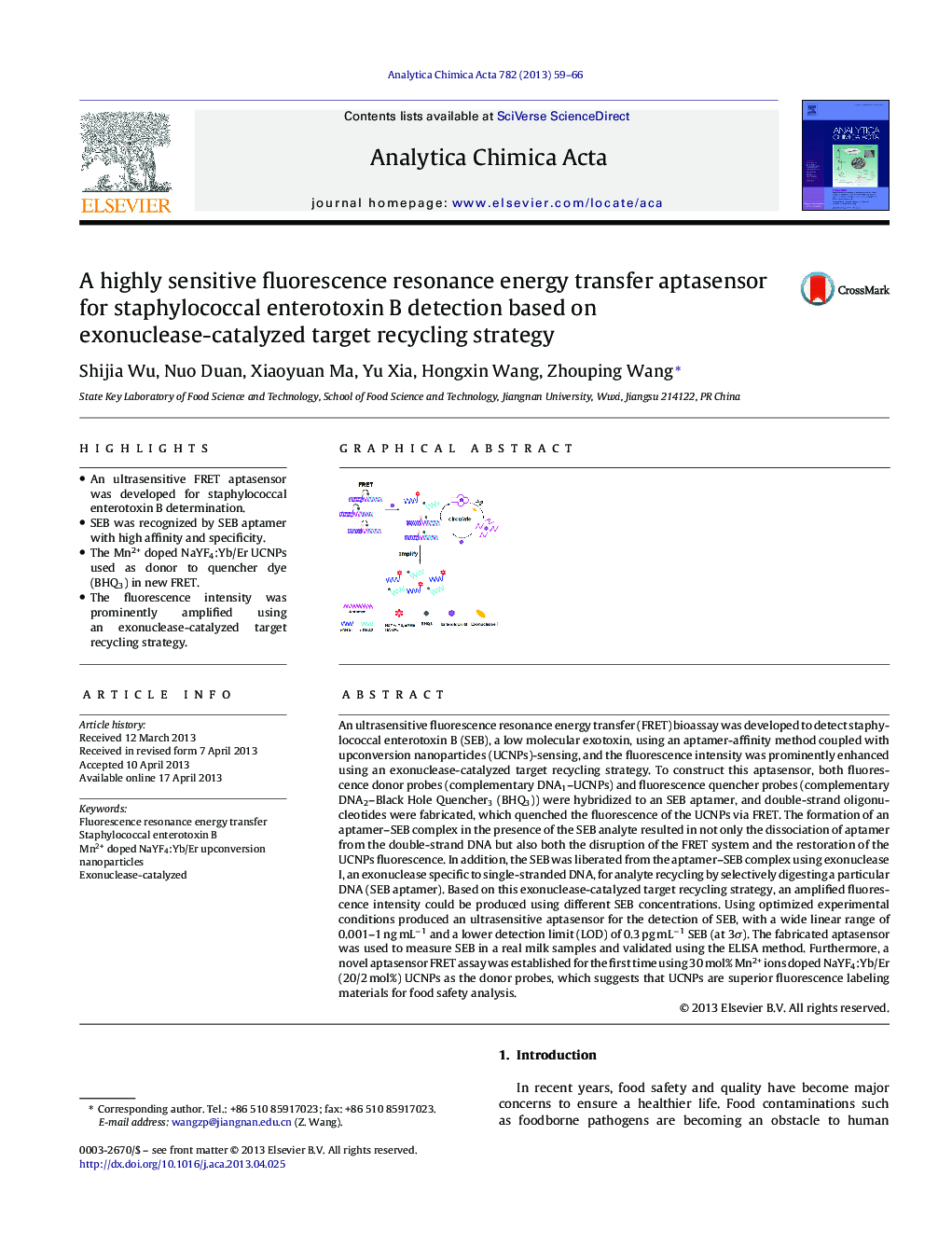| کد مقاله | کد نشریه | سال انتشار | مقاله انگلیسی | نسخه تمام متن |
|---|---|---|---|---|
| 1164886 | 1491050 | 2013 | 8 صفحه PDF | دانلود رایگان |

• An ultrasensitive FRET aptasensor was developed for staphylococcal enterotoxin B determination.
• SEB was recognized by SEB aptamer with high affinity and specificity.
• The Mn2+ doped NaYF4:Yb/Er UCNPs used as donor to quencher dye (BHQ3) in new FRET.
• The fluorescence intensity was prominently amplified using an exonuclease-catalyzed target recycling strategy.
An ultrasensitive fluorescence resonance energy transfer (FRET) bioassay was developed to detect staphylococcal enterotoxin B (SEB), a low molecular exotoxin, using an aptamer-affinity method coupled with upconversion nanoparticles (UCNPs)-sensing, and the fluorescence intensity was prominently enhanced using an exonuclease-catalyzed target recycling strategy. To construct this aptasensor, both fluorescence donor probes (complementary DNA1–UCNPs) and fluorescence quencher probes (complementary DNA2–Black Hole Quencher3 (BHQ3)) were hybridized to an SEB aptamer, and double-strand oligonucleotides were fabricated, which quenched the fluorescence of the UCNPs via FRET. The formation of an aptamer–SEB complex in the presence of the SEB analyte resulted in not only the dissociation of aptamer from the double-strand DNA but also both the disruption of the FRET system and the restoration of the UCNPs fluorescence. In addition, the SEB was liberated from the aptamer–SEB complex using exonuclease I, an exonuclease specific to single-stranded DNA, for analyte recycling by selectively digesting a particular DNA (SEB aptamer). Based on this exonuclease-catalyzed target recycling strategy, an amplified fluorescence intensity could be produced using different SEB concentrations. Using optimized experimental conditions produced an ultrasensitive aptasensor for the detection of SEB, with a wide linear range of 0.001–1 ng mL−1 and a lower detection limit (LOD) of 0.3 pg mL−1 SEB (at 3σ). The fabricated aptasensor was used to measure SEB in a real milk samples and validated using the ELISA method. Furthermore, a novel aptasensor FRET assay was established for the first time using 30 mol% Mn2+ ions doped NaYF4:Yb/Er (20/2 mol%) UCNPs as the donor probes, which suggests that UCNPs are superior fluorescence labeling materials for food safety analysis.
Figure optionsDownload as PowerPoint slide
Journal: Analytica Chimica Acta - Volume 782, 11 June 2013, Pages 59–66